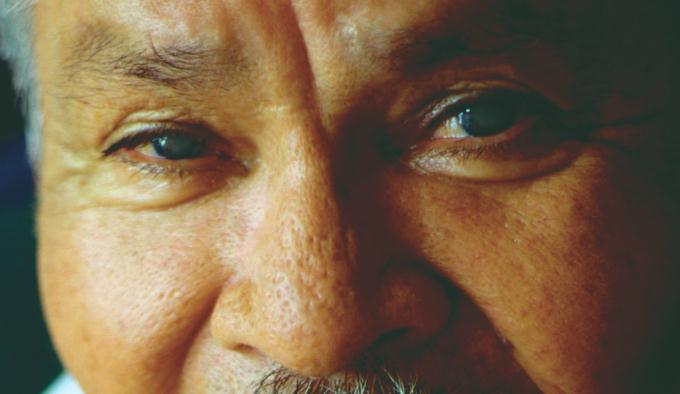Basic HTML Version


lifeand health
w
5
For more information about
Ophthalmology Services, please call
877.364.4202
.
MODERN
cataract surgery
is considered by many to be one of
the most successful procedures in
the history of medicine. at cer-
tainly has not always been the case.
Many people still remember the
days of prolonged
hospitalizations,
limited activity,
thick glasses, and
even sandbags to
immobilize the pa-
tient’s head. What’s
happened in the
last 50 or so years
to get us where we
are today?
e human eye contains a lens be-
hind the pupil that focuses light onto
the retina at the back of the eye. In
childhood, the lens is clear and very
exible. With increasing age, the lens
loses its exibility and ability to focus.
By age 40 or a little a er, the lens is sti
enough that reading becomes a strain,
and reading glasses or bifocals be-
come necessary. As the lens becomes
sti er, it also begins to get cloudy.
A cloudy lens is called a cataract.
e main factor leading to cataract
development is age, though heredity,
metabolic diseases, certain medica-
tions and injuries can also contribute.
Looking back
Until relatively recently, cata-
ract surgery involved removing the
entire cloudy lens, more or less in
one piece. is necessitated a large
incision. Before the advent of ne
needles and suture material, this
incision was just brought together at
the end of surgery and the eye was
patched. Any sudden movement,
coughing, sneezing or straining
Cataract surgery then and now
By William Kirber, MD
Ophthalmologist
could disrupt the incision and result
in disaster. People were kept in the
hospital on bed rest, o en with their
heads immobilized with sandbags,
until healing began. Even a er leav-
ing the hospital, activity was limited
for weeks. In
addition, the
eye without
a lens was
completely out
of focus. ick
glasses that limited peripheral vision
were necessary to restore vision.
Once ne needles and sutures
became available, the incision could
be closed tightly at the conclusion of
surgery, making the eye much safer
for earlier activity. With the advent
of surgical microscopes and a more
immediately stable eye, the use of
arti cial lenses placed in the eye at
the time of surgery to restore focus
became practical.
An eye to the future
e next major advance that re-
ally brought cataract surgery into the
modern era was phacoemulsi ca-
tion, a method of breaking up the
cataract inside the eye and allowing
its removal through a very small
incision. e small incisions have a
minimal and predictable e ect on
the curvature of the eye.
As instruments to measure the
eye before surgery became more
accurate, predicting the outcome
of surgery
became more
consistent. is
allowed for
modi cations
to the surgical
procedure and choice of intraocular
lenses so that the procedure could be
tailored to the individual’s eye as well
as visual requirements. By address-
ing pre-existing nearsightedness,
farsightedness and astigmatism, it
is now o en possible not only to
restore vision to pre-cataract levels,
but to sometimes improve it to bet-
ter than it has been for years—if not
decades.
Of course the eye is not a math-
ematical model and surgery, no
matter how sophisticated, is never
an exact science. Risks still exist
and many pre-existing conditions
can a ect the results. Nevertheless,
cataract surgery has experienced
dramatic advances, and patients can
generally expect excellent outcomes.
WilliamKirber, MD
Ophthalmologist
EYE CARE

